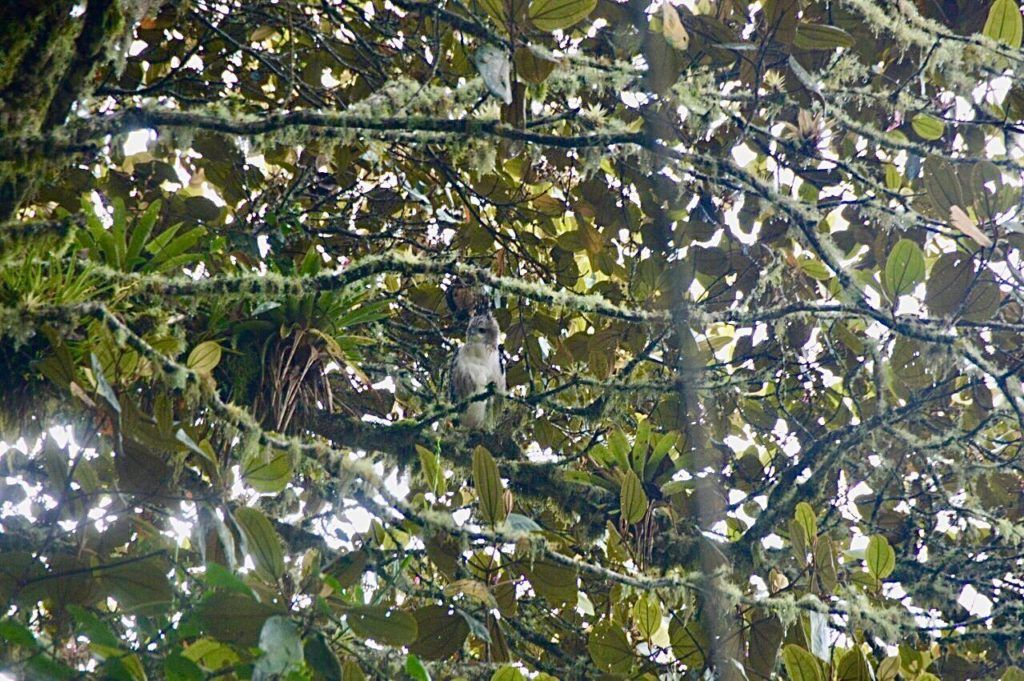There are some species we know so little about that every observation is exciting. Black and chestnut eagles are one such species with just 250 adults left in the world. With so few individuals left, identifying and protecting remaining eagles and their preferred habitat can make a significant difference to the future of the species. PTES is supporting Rainforest Concern in Ecuador to protect the recently discovered birds living on the edge of Neblina Reserve and work with the local communities to ensure the trees they nest in are not felled.
Forests in the sky
Found on the slopes of the tropical Andes, these magnificent eagles need undisturbed tropical montane cloud forest to survive. They build huge nests in tall trees, often cecropia trees, which have thin, pale trunks and large, lobed leaves. These pioneer trees, some of the first to grow when a space opens up in the canopy, grow really quickly, up to 20m tall. But the ongoing fragmentation and destruction of cloud forests mean the eagles’ habitat has been declining for many years

New beginnings
Tashkin Meza, Rainforest Concern’s principle investigator, first discovered a nesting pair of eagles last year in 2021. Excitingly the adult pair had a juvenile. The adults are darker in colour, their plumage changes as they mature. It can take three or four years for a juvenile eagle to develop their mature feathers. Now he’s discovered a second juvenile in the next watershed – a valley running alongside the one where the first pair were spotted. And Tashkin has also confirmed that the original adult pair have built another nest in the nextdoor valley, Santa Rosa valley, and seem to making courtship flights, which means they could be ready to produce more young.
Protecting eagles for the future
By observing the eagles, Tashkin and his team can map where the birds are and what their habitat needs are, collecting valuable data which the Ecuadorian government can then use to form the first national protection plan for the species. He’s also working with local communities to put in place protection strategies to help the eagles thrive in the reserve and surrounding area. We’re hoping to bring more updates soon about the nesting adults, and also on the two juveniles as they establish their own territories.
Thank you for helping us fund this research to protect black and chestnut eagles in Ecuador.
If you’d like to support this work, please donate or set up a direct debit here today:
Find out more about our work to protect black and chestnut eagles in Ecuador:
